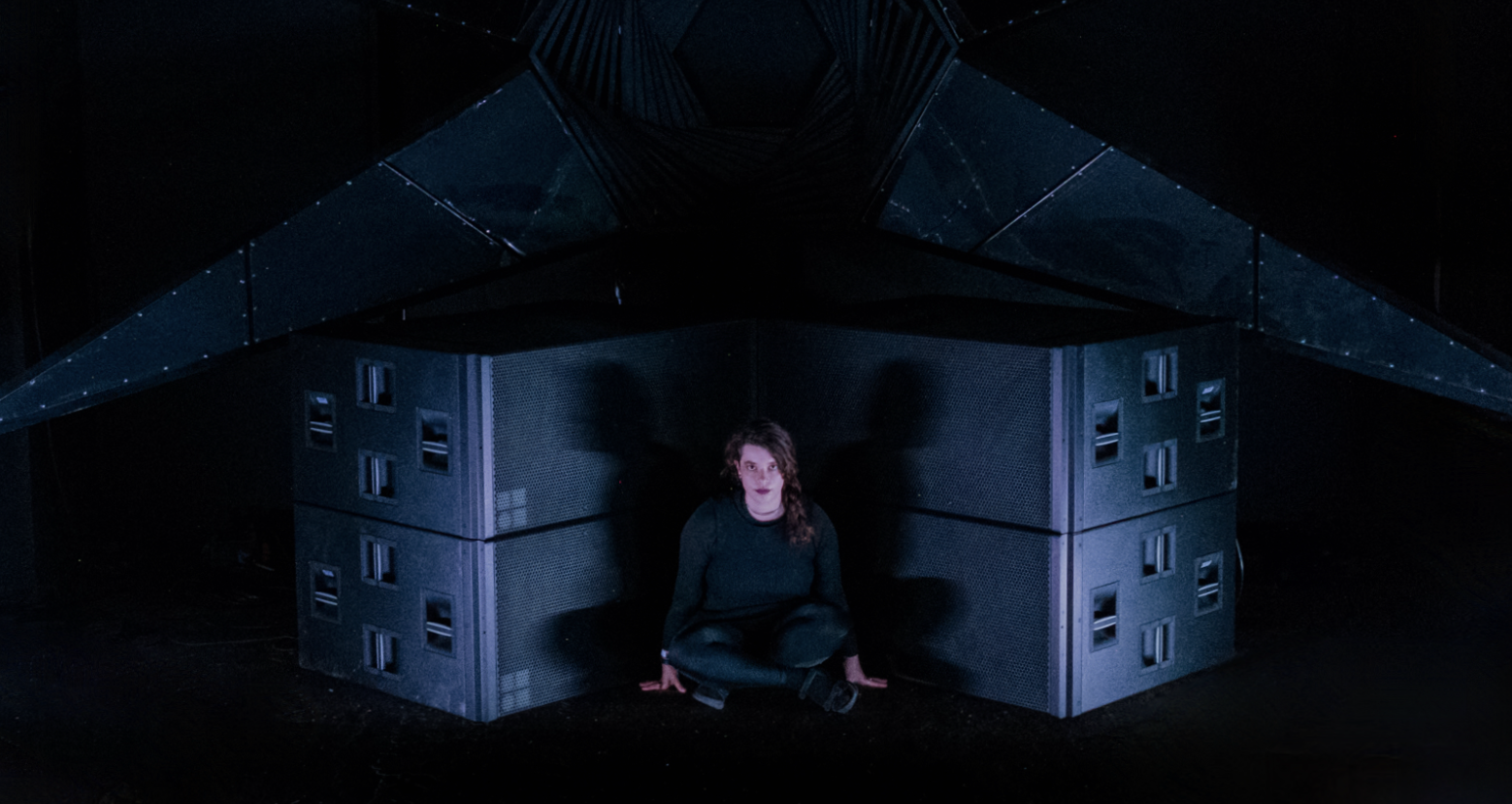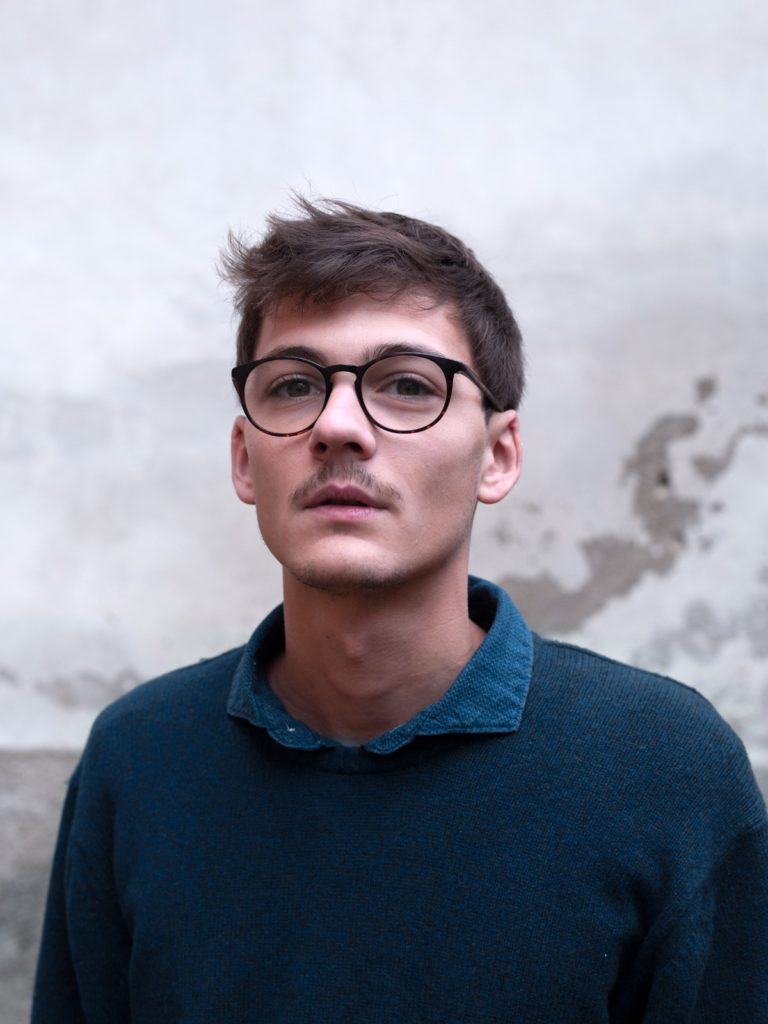
Made for Una Boccata d’Arte, Stefanie Egedy’s latest installation takes her research on low frequencies, bodies and architecture further.
“In 2023, I will celebrate my tenth Sonic anniversary!” Stefanie points out at the beginning of our chat. “If I had to go back to the beginning, I would mention my solo listening sessions. In those, I would listen to loud music with subwoofers and just surrender to sound, achieving that state between asleep and awake, almost in a trance, erasing my thoughts”.
Stefanie Egedy was born in São Paulo, Brazil, and lives in Berlin. For years she has been experimenting with sound, installation and performance, studying in particular low frequencies and their relationship to human bodies and architectural structures, using field recordings and analogue and digital synthesis. This cross-over between sound and musical language becomes a means of investigating how organisms communicate and interact.
The ongoing project “BODIES AND SUBWOOFERS (B.A.S.)” includes a series of site-specific sound installations that explore the interactions between sub-bass, infrasound andbodies based on the subwoofers’ arrangement. Stefanie has been studying for years how a given frequency range communicates with multiple types of bodies: human bodies – and how sound waves contribute to the nervous system with increased relaxation, stress and anxiety reduction – and the structural aspects of the space in which the installation is presented, informing the correlations (resonances) between sound and building features (materials, walls, columns and floor). The audience perceives the pressure and distortions of sound as a physical presence that permeates the space. “My work is always in a dialectic relationship with the environment and its stakeholders. B.A.S. taught me to arrive at and comprehend (as a continuous movement rather than a conclusion) how it relates and interacts with its surroundings. I’m interested in inviting people to experience the relaxing effects of low-frequency sounds, even if it’s through intensity.”
What today represents an elaborate research project was born out of a personal need and curiosity. “In 2014, I began experimenting with sound composition, and it was all about the well-being that interacting with these waves would bring me. So what began as a solo self-experiment gradually evolved into my work. I used to DJ back then, and my equing was obviously boosted in the lows. Simultaneously, I was working on more experimental approaches with Camille Laurent, with whom I investigate the suspension, even if only temporarily, of physical and mental control through the spatialization of light and sound.
The context was Sã0 Paulo, Brazil, where I had one foot in the party scene and another in the experimental music/expanded cinema scene, and I believe they were all informing and influencing my approach to sound.”
The latest declination of project B.A.S. is the installation “BODIES AND SUBWOOFERS (B.A.S.) 8.0: PERMANENCE,” created by Stefanie for the Aosta Valley region as part of the diffuse art project Una Boccata d’Arte. The natural landscape of the Aosta Valley strongly influenced the development of the work. “Perhaps if my composition flirts with fast-paced rhythms in an industrial setting, for a green natural landscape this would sound out of place. Then, I chose to compose a piece in which sound moves slowly and almost blends in with the environment.”
To create the installation, Stefanie collaborated with two Italian artists with entirely different artistic practices: Laurent Jacquemod, a craftsman from Avise, a town in the Aosta Valley, and Giovanni Sambo, a videomaker and photographer from Venice.
The contribution of Laurent Jacquemod, from the Aosta Valley firm Jacquemod Fratelli, emphasizes the quest for a dialogue with the natural landscape; “My work is closely linked to the territory. I use local materials and draw inspiration from tradition and the surrounding environment, creating unique pieces that celebrate craftsmanship and its deep connection to the Aosta Valley region.” Jacquemod has created circular wooden seats inspired by the natural forms and richness of the forest heritage of the Aosta Valley mountains. With great skill and attention to detail, he selected wood logs from local trees, “making sure each piece had a story to tell,” he specifies. The circular shape of the wooden seating blends in with its surroundings, creating a harmonious fusion of art and nature.
“Each seat is unique, with its grain and colour shades telling the story of the tree from which it was shaped. These seats become a tangible testimony to the passion for craftsmanship and love of nature. They are not just functional objects but true works of art that I wish would convey a sense of warmth and authenticity. It is an invitation to take part in a moment of contemplation and connection with the surrounding nature and Stefanie Egedy’s sound project,” Laurent says.

Giovanni Sambo grew up in the saline atmosphere of the Venice lagoon, where he lives and works. His artistic practice ranges from photography, documentary filmmaking to photography direction in independent movies. Giovanni realized a documentary dedicated to Stefanie Egedy’s installation for Una Boccata d’Arte. “I often collaborate with other artists and I pursue my artistic research together with my brother. I think it is very stimulating to work with personalities developing varied and complex artistic practices.”
Giovanni talks about his work with enthusiasm and a critical eye. “When shooting my focus is on the balance between light and composition, seeking formal purity and cleanliness. In the future I would like to be able to focus more on independent documentary projects or fiction, focusing and exploring authorial facets as well as technical and photographic aspects.”
The collaboration with the two Italian artists distinguishes the installation created for Una Boccata d’Arte from previous declinations of the project. The participation of Laurent and Giovanni allowed Stefanie to explore a further relational level within a practice primarily interested in relationships and interactions. “B.A.S. has also taught me that it all comes down to human relationships in the end. It is not only about the interaction with the architectural one but also about how the work interacts with the people who frequent the space where the work is being performed.” She concludes.
Published in Italian on ArtsLife.